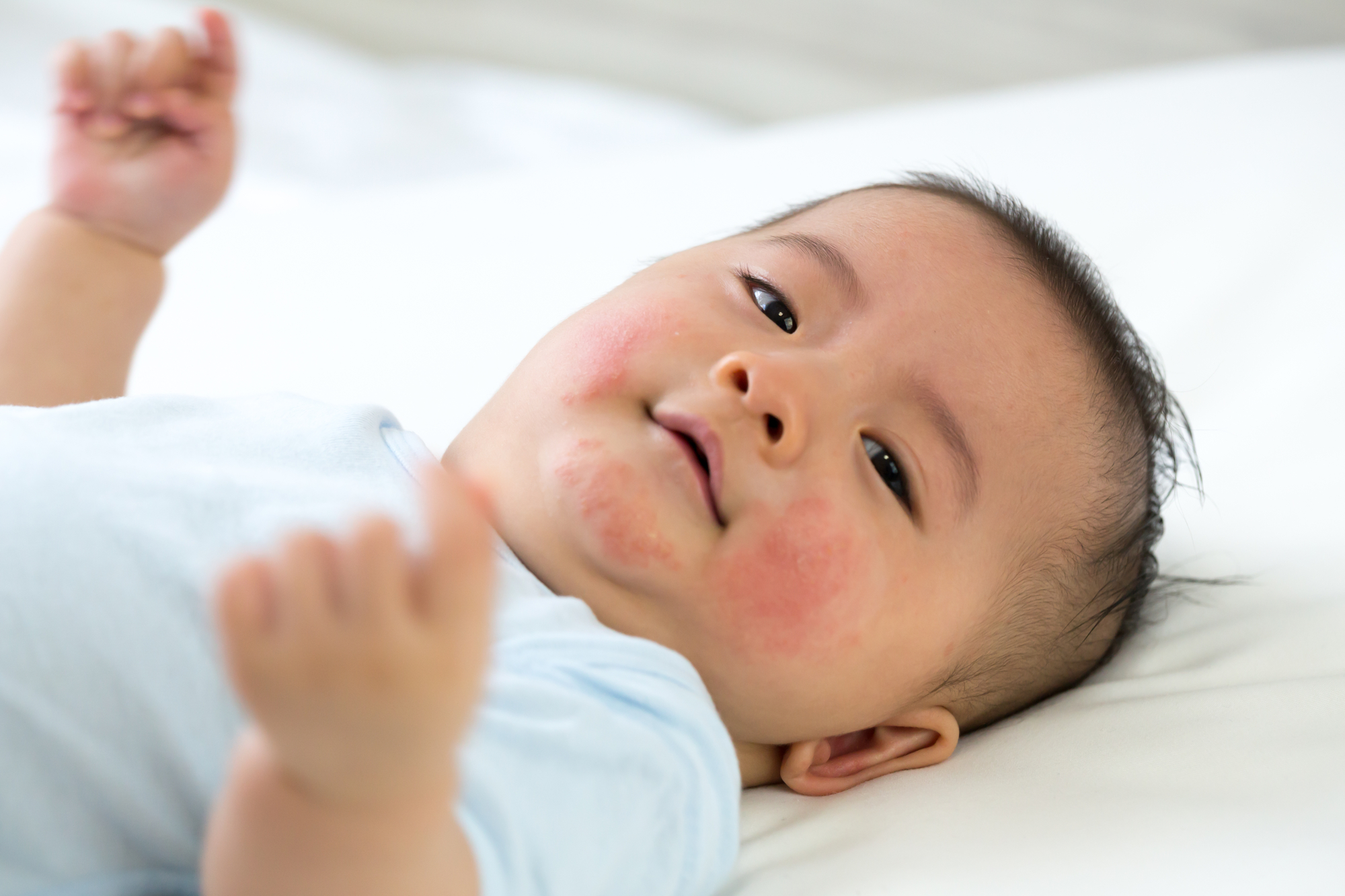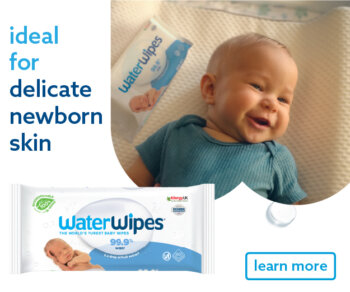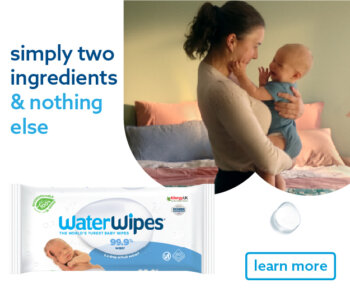Media kindly brought to you by WaterWipes
A baby’s skin is extremely delicate, which means it could be prone to breaking out in rashes now and again. When this happens, it’s easy for new parents to feel nervous, but most of the time it really is nothing to worry about. One of the most common skin conditions in babies is hives. Here we tell you what they look like, why they occur and what you can do about them.
- What are newborn baby hives?
- What do newborn baby hives look like?
- Are newborn baby hives contagious?
- What causes hives in babies?
- When should I be concerned about my baby’s hives?
- Can you prevent newborn baby hives?
- Hives treatment – how do you manage baby hives?
1. What are newborn baby hives?
Hives are a particular type of skin condition and rash that can affect both adults and children. They are very common and can appear anywhere on the body, either collected in clusters or spread out all over.
2. What do newborn baby hives look like?
Hives cause a raised, itchy rash. They can look red on lighter coloured skin but may be less noticeable on brown and black skin. Hives can vary in size from half an inch to several inches, have pale centres, and, if you press on then, they’ll turn white. Hives usually occur when your little one’s body releases histamine in reaction to something either internal or external (more on this later).
Newborn baby hives can look a little concerning, but in most cases, they’re more a nuisance than a genuine cause for concern.
3. Are newborn baby hives contagious?
No, newborn baby hives are not contagious – but they can be itchy and uncomfortable for your baby.
4. What causes hives in babies?
If you’re worrying that you’ve somehow played a role in your newborn baby developing hives – perhaps by washing them too much or even not washing them enough – then there’s really no need to. For most babies, there’s simply no reason for what triggers recurrent hives.
Culprits (when there is one) include cold weather, heat, pressure on the skin, stress or an allergic reaction to a sting, insect bite or pet dander. Less commonly, hives can be a sign of an allergic reaction to certain foods, such as peanuts, milk and egg whites. Learn more about baby skin allergies.
The most common cause of hives, though, is an infection or virus, such as a cold or flu, which accounts for up to four out of five cases.1
5. When should I be concerned about my newborn baby’s hives?
Baby hives on their own aren’t too much cause for concern, but if they’re accompanied by other symptoms such as breathing issues, vomiting, an inability to swallow or a swelling of the throat, call 999 immediately.
Most bouts of hives, however, cause mild discomfort in baby at most, but if you have any concerns at all, speak to your GP or health visitor.
6. Can you prevent newborn baby hives?
Hives occur when baby’s body is exposed to something it doesn’t like. You could theoretically try and prevent them by removing the irritant or allergen the baby is reacting to; however, this is easier said than done because – as established above – the list of triggers is substantial and, in most cases, allergens and irritants simply aren’t to blame.
If you are keen to play detective, hives usually appear within minutes to a few hours after contact with the irritant or allergen, so try and work your way back in time, making note of any potential offenders. This is especially important if baby’s hives keep reoccurring.
7. Hives treatment – how do you manage newborn baby hives?
- Most outbreaks of hives are usually mild and go away on their own, but to improve baby’s comfort levels (especially if they seem really itchy) you could try the following to manage and treat your newborn baby’s hives:
- Applying a cold washcloth to the hives, or gently cleansing the area with a gentle wipe or a wipe with minimal ingredients, like WaterWipes biodegradable, vegan, cruelty-free and sensitive baby wet wipes
- Giving your little one a cool bath to help soothe the itching (be sure to check the temperature by using your elbow, though, you don’t want the water to be too cold). Find out more about how to bathe your newborn baby.
- Keeping your baby cool generally (try opening doors or windows to allow air to circulate at night)
- Cutting baby’s fingernails or putting them in mittens (so they can’t scratch). Learn more about baby face scratch prevention.
- Putting baby in loose clothing (that doesn’t rub)
- Giving baby a simple antihistamine (as recommended by a GP or pharmacist). This can be done at home to help more severe cases and will help reduce the itching, rash and any swelling.
Remember, if you’re worried in any way, your doctor won’t mind at all if you get in touch.
If you found this newborn baby hives guide helpful, you might like to take a look at some of the other features on our Parenting Hub? For example:
- Newborn baby eczema tips
- Eco-friendly baby skincare
- Baby skin conditions and rashes
- Newborn baby nappy rash tips
- Baby contact dermatitis
- Baby heat rash
- Teething rash and treatments
Reference:
1. https://www.babycentre.co.uk/a548386/hives-in-babies
By: Cairine Wilkinson – Expert Dermatologist
Cairine Wilkinson, is a consultant dermatologist at Derriford Hospital in Plymouth. She has a special interest in paediatric dermatology and is a member of the British Association of Dermatologists.









